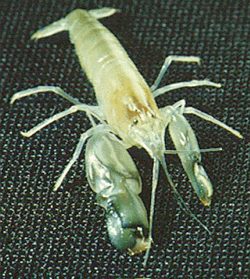Author
Array
(
[0] => linkedin
[1] => facebook
[2] => twitter
[3] => google-plus
[4] => youtube
)
Array
(
[0] => linkedin
[1] => facebook
[2] => twitter
[3] => google-plus
[4] => youtube
)
Array
(
[0] => linkedin
[1] => facebook
[2] => twitter
[3] => google-plus
[4] => youtube
)
Array
(
[0] => linkedin
[1] => facebook
[2] => twitter
[3] => google-plus
[4] => youtube
)
Array
(
[0] => linkedin
[1] => facebook
[2] => twitter
[3] => google-plus
[4] => youtube
)
No Author
Author archive
 Read article: Beyond understanding 2
Read article: Beyond understanding 2
Over the past 15 years there have been significant increases in the coverage of science in the mass media and the number of hands-on science centres in the UK, two developments that would be expected to foster better “public understanding of science”. But as noted in Who’s Misunderstanding Whom? (see links), a new report on […]
 Read article: Hawking: the cardboard creation
Read article: Hawking: the cardboard creation
Julian Barbour reviews the play God and Stephen Hawking by Robin Hawdon

The Hubble constant, which is the rate at which the velocity of a galaxy increases with distance, is one of the most fundamental constants in cosmology. Astronomers can only obtain an accurate value for the constant using ‘standard candles’, which give reliable and accurate measurements of the distance to receding galaxies. One such class of […]

Computer chips are made using a process called optical lithography, in which light traces out patterns on a photosensitive substrate covering the silicon. The problem for chipmakers who want to make ever smaller components is that materials needed for lenses and other optical components are not effective at wavelengths below the ultraviolet. Optical lithography therefore […]

It is straightforward to incorporate the obvious physical attributes of people in a crowd, like pedestrian mass and velocity, into the simulations. But Helbing’s team went on to include psychological tendencies in the model by likening them to the kinds of interaction that take place between particles. The tendency of people to stay away from […]

Ghez and colleagues collected infrared images of the nucleus of the Milky Way over a four-year period using the 10-metre Keck telescope on Mauna Kea in Hawaii. The positions of the stars nearest Sagittarius A* change significantly in only a few years, so the team were able to measure the stars’ velocities in the plane […]

The CODAG experiment recreated for the first time conditions in the early solar system in order to observe the dust clustering process. Micron-sized silicon oxide grains were injected into a chamber filled with low-pressure gas to simulate the pre-planetary nebula of dust. In the very low gravity environment of the space shuttle, it is thermal […]
 Read article: The bubble bursts for shrimps
Read article: The bubble bursts for shrimps
Scientists originally thought the shrimps’ snapping sound was produced by mechanical contact between opposing sides of the claw. But Barbara Schmitz, a biologist at the Technical University of Munich, and Lohse noticed during other studies that bubbles formed near the shrimps’ closing claws. They suspected that when a shrimp’s claw snaps shut, a jet of […]
 Read article: Astronomers find middleweight black hole
Read article: Astronomers find middleweight black hole
The black hole is around 600 light years from the centre of galaxy M82. “This black hole might eventually sink to the centre of the galaxy where it may grow to become a supermassive black hole”, says Hironori Matsumoto of the Massachusetts Institute of Technology, lead author on one of three papers about the discovery. […]
 Read article: CERN chases the Higgs
Read article: CERN chases the Higgs
“It was a difficult decision,” admitted Roger Cashmore, CERN’s director of research to Physics Web. “We wanted to give the experiments the opportunity to better test the effect without compromising the LHC schedule.” If the experiments continue to measure the same effects, the extra data will reduce the likelihood that the observation is a statistical […]
Copyright © 2025 by IOP Publishing Ltd and individual contributors
 Read article: Beyond understanding 2
Read article: Beyond understanding 2




